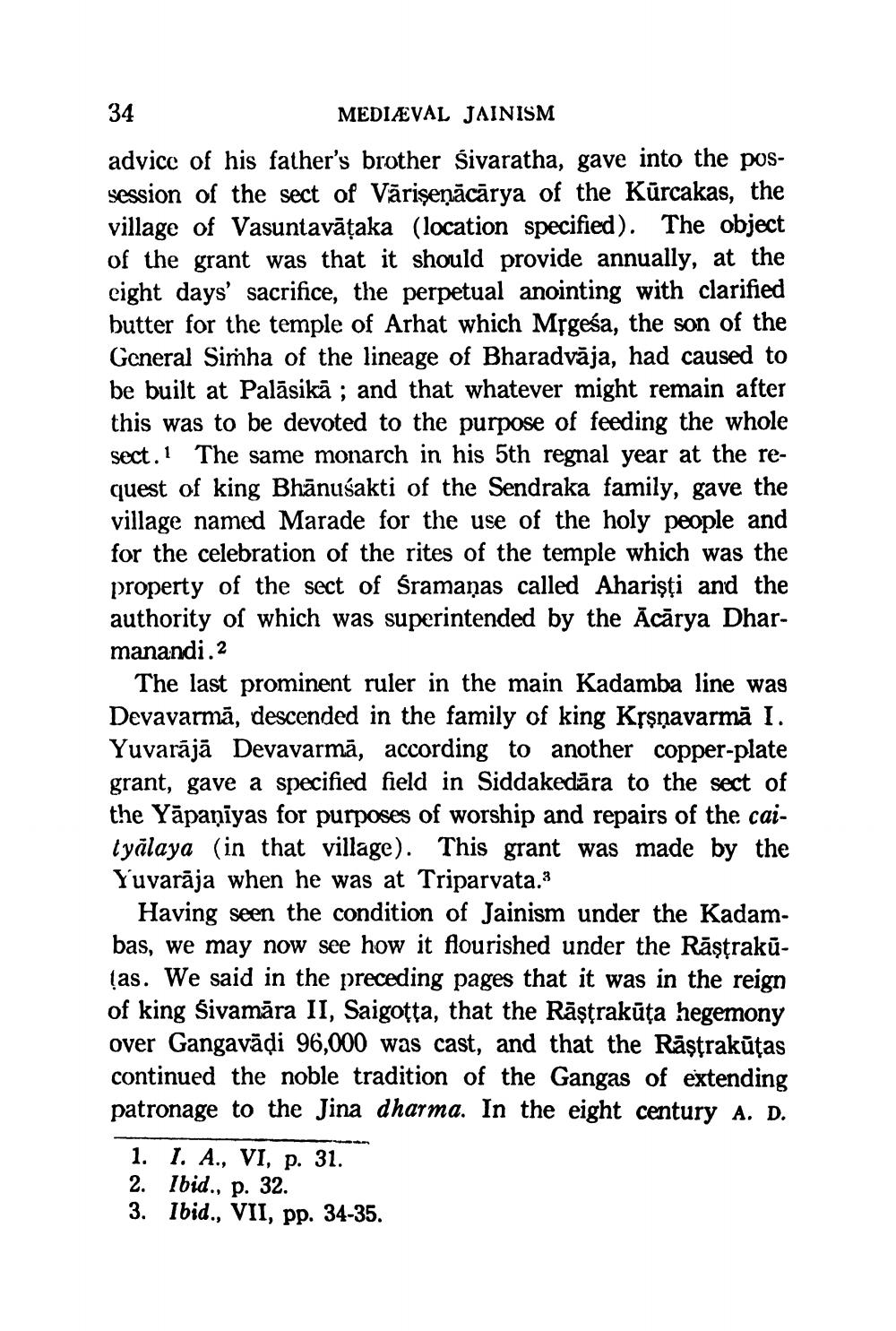________________
34
MEDIEVAL JAINISM
advice of his father's brother Sivaratha, gave into the possession of the sect of Varişenācārya of the Kurcakas, the village of Vasuntavāṭaka (location specified). The object of the grant was that it should provide annually, at the eight days' sacrifice, the perpetual anointing with clarified butter for the temple of Arhat which Mrgesa, the son of the General Simha of the lineage of Bharadvaja, had caused to be built at Palāsikā; and that whatever might remain after this was to be devoted to the purpose of feeding the whole sect. 1 The same monarch in his 5th regnal year at the request of king Bhanusakti of the Sendraka family, gave the village named Marade for the use of the holy people and for the celebration of the rites of the temple which was the property of the sect of Śramaņas called Aharişți and the authority of which was superintended by the Acārya Dharmanandi. 2
The last prominent ruler in the main Kadamba line was Devavarmā, descended in the family of king Kṛṣṇavarmā I. Yuvarajā Devavarmā, according to another copper-plate grant, gave a specified field in Siddakedara to the sect of the Yapaniyas for purposes of worship and repairs of the caityalaya (in that village). This grant was made by the Yuvaraja when he was at Triparvata.3
Having seen the condition of Jainism under the Kadambas, we may now see how it flourished under the Răşṭrakutas. We said in the preceding pages that it was in the reign of king Sivamāra II, Saigoṭṭa, that the Rāṣṭrakūta hegemony over Gangavāḍi 96,000 was cast, and that the Rāṣṭrakūtas continued the noble tradition of the Gangas of extending patronage to the Jina dharma. In the eight century A. D.
1. I. A., VI, p. 31.
2. Ibid., p. 32.
3. Ibid., VII, pp. 34-35.




